MEN IN BLACK

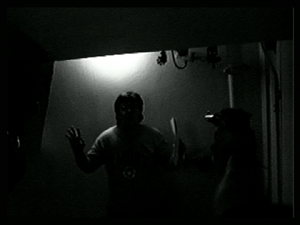 Yes, we know there's an actual film out there named Men In Black. Actually, three at this point, which have earned millions of dollars. You can imagine how annoying that is. But we were first, dammit.
Yes, we know there's an actual film out there named Men In Black. Actually, three at this point, which have earned millions of dollars. You can imagine how annoying that is. But we were first, dammit.
M.I.B. is CPF's only existing venture into so-called "serious" film. By serious, we mean it includes no deliberate humor, merely a plot about aliens taking over the world, if that sort of thing qualifies as serious. Production began, as these things so often do, on a whim because we were bored. We had, for reasons I no longer recall, but which couldn't have been good, arrived at Project A-kon 1, the first(?) anime convention in these here states, a full day early. With jack shit else to do, we shot an impromptu short featuring an anonymous John Q. Credulous vainly attempting to convince someone on the phone that "the document's really honestly real!" when the titular men in black show up at his hotel room and terminate his ass with extreme prejudice. The story could've ended there.

But, of course, it didn't. Months later, we found ourselves at another con, and bored once again. We as yet owned no camera, but as before, we quickly found one to borrow and began shooting more of this Men In Black story, picking up where the last bit had left off, and continuing very much in the same vein-a new character shows up, finds the document, and gets pursued through a hotel by our noir-engarbed villains, but this time manages to escape. Months later, yet another boring convention led to yet a third borrowing of a camera and a third chase through a hotel between a third unknowing victim-to-be and the same old M.I.B.s. Some time hence, we reckoned that adding some semblance of a plot might be in order, as well as filming some material depicting events other than "man who knows too much is chased and killed by/almost killed by/kills men in black."
Fortunately (and it's admittedly rare to use that word in this context), the footage comprising episode two was almost entirely unusable, as the borrowed camera's light sensitivity couldn't hack the dimly-lit hotel interiors at night. The necessity of reshooting this segment meant two things: 1. We could begin shoehorning in some of that "plot" crap we had been chewing over, and 2. we could make an effort to actually put a little production value into the thing; i.e. no M.I.B. costumes comprised of a black T-shirt, blue jeans, and tennis shoes. No fight scenes consisting of a total of three shots. Actual dialogue between the chasey bits. Continuity.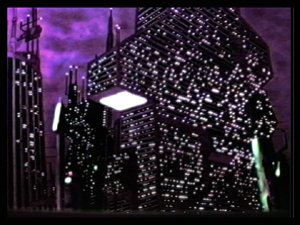
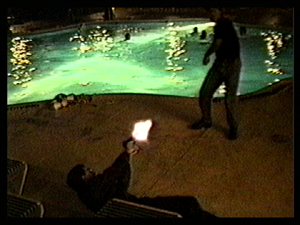
The plot, which was coming together in scattered bits, was to be set within "The Mall," an overgrown fungus of commerce and neon flash that had been the subject of a series of recurring dreams on the part of Christian Smith, my co-creator in this mess of a project. The dreams had focused on this impossibly intricate and hugeass mall that for some reason needed to be blown the hell up. Why? Clearly, we reasoned, because our black-trenchcoat-and-fedora-clad aliens were living beneath it and using it as a laboratory to test and experiment upon the poor unsuspecting humans within. (Many years later, a little film called Dark City came out, and you can imagine how annoying that was.) With a setting and the inkling of a storyline-centered upon the search for the man killed in the first M.I.B. installment and crossing over into the efforts of a dissident group to destroy The Mall and all traces of the alien presence with it-we began shooting a fourth segment, which featured the character played by Grant Goggans (named Dan Gerard) lost within the labyrinth of tunnels beneath The Mall (a cool set of water drainage tunnels that Grant showed us and forever thereafter regretted showing us) and seeking to elude his pursuers whilst finding his way out of the old city of Atlanta, now subsumed beneath the encroachment of the Mall's structure. The second segment was also shot anew, and actually featured some characters talking to each other betwixt the chase scenes, as well as our most ambitious sequence to date: a fight in descending glass elevator between Dan and a Man in Black with some glowing death stick of sorts. The bulk of this segment was filmed in CNN Center, with no permission whatsoever, during the Gulf War, with us running about in trenchcoats and waving fake guns around, the sort of brazen shit we wouldn't even dream of trying today.
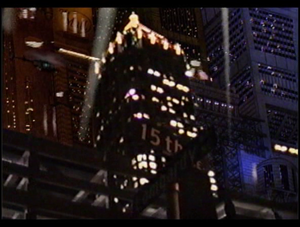
We also began experimenting with cheap-and-easy special effects at this time, to give our SF opus a little visual interest. Our first ever matte painting shot was accomplished by simply doing a painting on a sheet of plastic and leaving a few holes in it, through which Grant, strategically positioned a few hundred feet behind, could be seen as if he were standing in the painted scenery. We also discovered the wonders of beam splitters (a great FX device made of a box and a pane of glass, costing about $1.00), allowing us to incorporate laser effects shots, the test footage of which led to George Lucas, Age 9, as well.
The video we would eventually name Men In Black: Volume 1 was made up from the initial A-Kon segment (turned black and white and designated a prologue), the reshot segment 2, and the third and fourth segments (featuring Scott Weikert's portrayal of a private eye and the "lost in the underground" sequences, respectively), and ended with "to be continued." We had every intention of doing just that. The fact that the elaborate scenario we'd devised was something which was utterly beyond our capabilities at the time was a matter about which we were in total denial. We were young and excited about the prospect of making a real narrative film, and the fact that we had no equipment to speak of or the millions of dollars really needed to pull off what we'd visualized was irrelevant to our enthusiasm.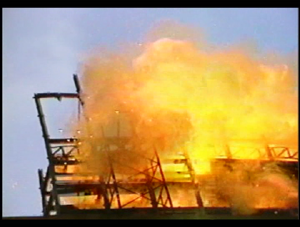
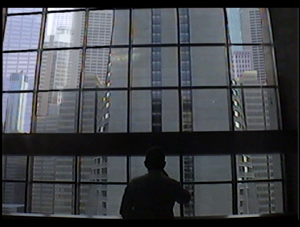
It bears noting that the finished product was, if anything, a film that was deliberately designed to fuck with the audience. We rather cussedly refused to divulge any unnecessary information, such as, for example, the characters' goddamn freaking names. Any given character was inevitably referred to by only their first or last name whilst onscreen, and by the other name when offscreen. The segments also failed to follow anything so banal as linear time, though this fact isn't readily given away, either. The movie was rather like an Atom Egoyan film about aliens coming to screw with our brains, if such an animal can be easily imagined, and as Christian Smith once pointed out, was a film that "wasn't afraid to show the audience a screenful of nothing." More than simply describing the costuming choice of the titular badasses, the name of the film seemed to be more about the fact that light avoided the actors like the plague; Men In Blackness might've been a more appropriate title, in the final analysis.
It quickly became clear that the first thing that needed addressing on the subject of Men In Black II was the numerous shortcomings of Men In Black 1. The models for the underground city were primitive and unimpressive, a color oversaturation process we had applied to the scenes within the mall, and which had looked fine on the UAB editing suite's monitors, looked like muddy shit on regular TVs, the camerawork was often either too static or too clumsy (owing much to the fact that we were trying to get these shots and get out of wherever we were filming before we got thrown out) and the pacing was rather slow. Since the underground region was to be featured prominently in part II, the reshooting of the model building scenes was the first thing to be fixed, as well as restoration of the oversaturated mall scenes. We had acquired a VCR with editing functions by this time, which meant no more long drives to Birmingham every time we wanted to edit or re-edit.

Men In Black II was to be much more ambitious than its predecessor, featuring not only a greater cast of characters, but more elaborate action scenes, including a car chase and a laser gun battle in the underground. A script was prepared and distributed to all participants (which at this point included just about everyone we knew), and shooting began in the spring of '92. But there were inevitable snags, including some botched FX shots that suddenly seemed out of our reach, and an enormous difficulty in coordinating the large cast with our shooting requirements. The last major shoot on M.I.B. II, which was to feature nearly the entire cast in one place, fell to ruin when Grant couldn't make the shoot, and all the other actors, while present, weren't all present at the same time. It was also apparent that no one who hadn't personally worked on the script, save one exception, had actually gotten around to reading it before the shoot. Left with a bunch of shots featuring only a character or two at a time to work through, and the prospect of the same potential clusterfuck daunting future shoots, M.I.B. II quietly slipped through the cracks and was more or less abandoned by silent consensus. We moved our attention over to The Ozone Commandos, which then took seventeen years to finish, though our initial rationale, that it had a smaller, more manageable cast, was true enough.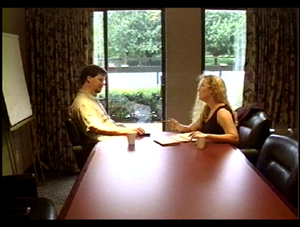

Though the prospects for M.I.B. II seemed bleak at best, improvements on the original continued unabated. Weaker shots were replaced, the previous count of six FX shots gradually climbed above fifty, and the old music (which in our artsy-ass aspirations about doing everything ourselves we had written on a cheesy K-Mart-bought keyboard) was slowly replaced by music containing more advanced concepts such as chords and melodies. Still, the failure to complete the story nagged at us, as we had a good two hours worth of footage completed for part 2 (that greatly surpassed that appearing in part 1) which was crying out to be used. Over the years, various notions of how the film might be brought to a proper ending, if an ending very different than originally intended, were tossed about and occasionally worked upon, but all managed to hit their own personal roadblocks. Right around the turn of the millennium, I hit upon a way in which the film might be brought to a close, which would require a minimum of additional filming. A series of new scenes designed to take place in the future of the existing continuity was shot, intended to fill in the gaps concerning several plot points which were never previously resolved. The same problem, however, plagued this update of MIB as had plagued the completion of Ozone Commandos-a dying, geriatric computer. Subsequent to rectifying the computer issues, the remastering of CPF's back catalogue and the eventual completion of Ozone Commandos part 1 kept MIB from moving to the front burner. With these projects behind us, however, things have begun moving forward. In the fall of 2014, shooting of new scenes began on MIB with the intention of seeing a completed story finally emerge, now twenty-four years after the first two-minute short was put to tape.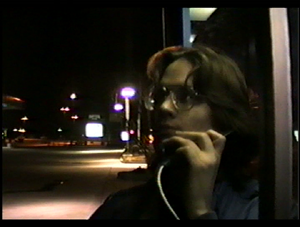
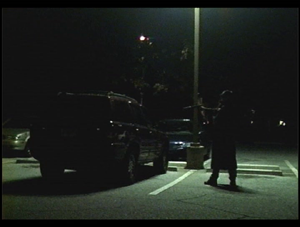
Of course, finishing off scenes for which principal photography was halted twenty-two years ago isn't the easiest thing to pull off. Much dialogue is missing from the scenes as they were originally scripted, and many scenes were never shot at all, causing havoc with continuity. In most cases, accessing the original actors isn't feasible, and would be useless anyway, given that twenty-two years ages most people rather noticeably. A great deal of restructuring was necessary in order to facilitate the completion of the next three episodes, as well as the repurposing of old footage in new contexts, which in several cases involved digitally extracting the actors from scenes that were never filmed with compositing in mind, in order to create new shots. At the same time, the story itself has undergone a major revision, partly by necessity and partly due to our disillusionment with the original premise. Men In Black as we now envision it is less about aliens and more about the nature of conspiracy theory itself.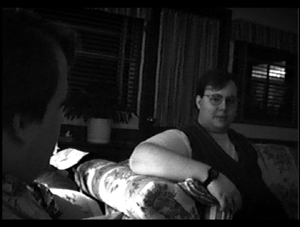

At the present, I can make no guarantees as to whether or not the extended "Director's Cut" of Men In Black will ever see the light of day; I can only say that my interest in completing our first ever foray into non-parodic filmmaking remains intact. Presently, I view the potential finished film as a sort of David Lynchian dreamscape vision of fractured communication and the nature of perception vs preconception. Because if it can't end with a spaceship crashing into the city as the heroes battle the villains on a collapsing skyscraper, I can pretend I'm some sort of art-film director instead, and maybe even fool someone.
-Matt Murray